The GWM Tank 500 PHEV ($79,990 drive-away) is a 300kW plug-in hybrid SUV that blends premium comfort, 120km EV range, and legit off-road chops with diff locks and low-range. It shines on trails and highways, towing 3,000kg, but 213mm clearance and sensitive sensors limit extreme adventures. Worth it for hybrid off-roaders ditching diesel—Prado rival with EV perks. Pros: Power, tech, efficiency. Cons: Tires, no third row. Verdict: Buy if you want electrified adventure without compromise.
In a world where off-road beasts are ditching diesel for electrified efficiency, the GWM Tank 500 PHEV bursts onto the scene as a game-changer for hybrid adventurers. This plug-in hybrid SUV marries serious 4×4 credentials with silent EV prowess, delivering 300kW of combined grunt and up to 120km of electric-only range—enough to zip through the city before tackling the outback. Launched in Australia amid GWM’s 2025 Tech Day buzz, where the brand unveiled its “multi-pathway” powertrain strategy (think hybrids, PHEVs, EVs, and even a global-debut 3.0L diesel), the Tank 500 PHEV underwent rigorous off-road testing at Victoria’s Lang Lang proving ground. It’s GWM’s bold play to outpace rivals like the Toyota Prado and Ford Everest in the electrified large SUV segment.
But here’s the hook: Can a hybrid really tackle serious off-road challenges? We put it through the mud, moguls, and mountains to find out if this $80k powerhouse lives up to its Prado-bashing promise.
Design & Exterior Features
The Tank 500 PHEV cuts an imposing figure, measuring 5078mm long, 1934mm wide, and 1905mm tall—a true body-on-frame bruiser built for the bush. Its rugged styling screams adventure: a massive chrome grille flanked by slim LED headlights, chunky black cladding, and squared-off wheel arches that nod to classic LandCruiser vibes without the sticker shock. The rear boasts vertical taillights and a full-width bar, giving it a premium, purposeful stance.
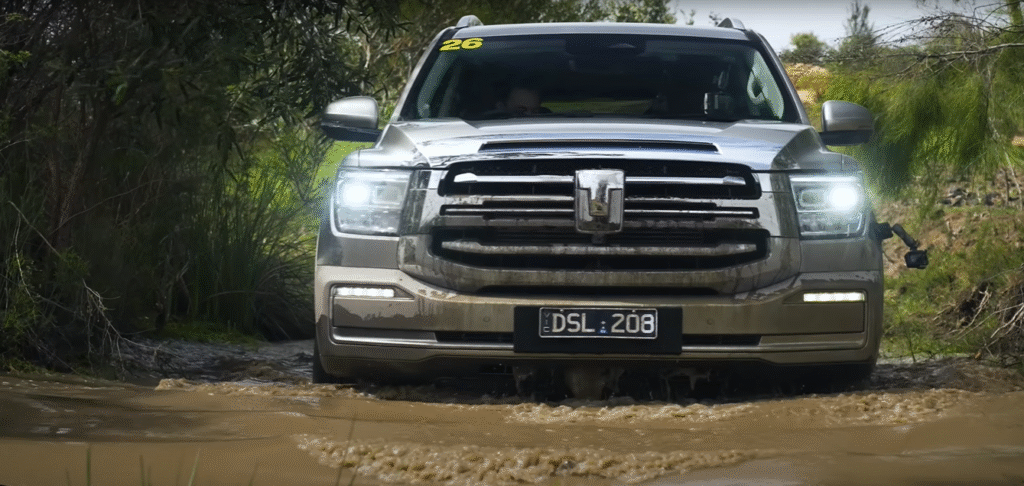
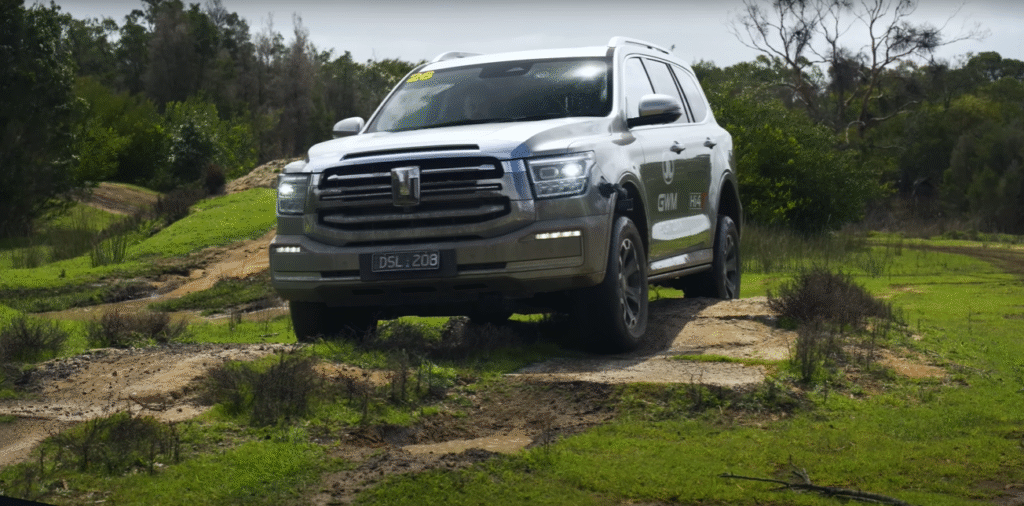
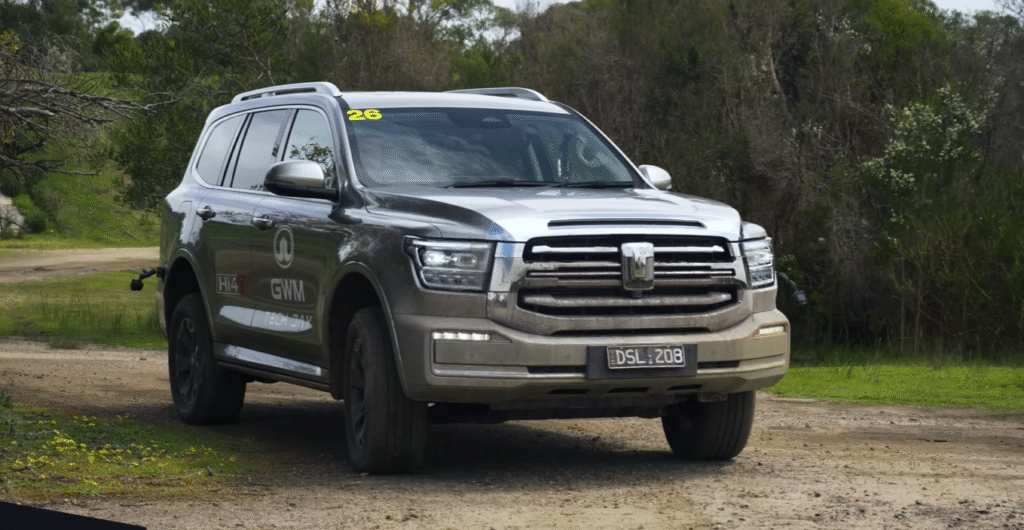
Off-road readiness is baked in, with a 30° approach angle, 24° departure angle, and 22.5° breakover angle for navigating steep inclines and dips. Ground clearance sits at a respectable 213mm (laden), paired with 18-inch alloy wheels wrapped in highway-terrain tires—solid for mixed use but begging for an upgrade to mud or all-terrain rubber for hardcore trails. Approachable yet aggressive, it’s the SUV that turns heads at the servo and scrapes through single tracks unscathed.
Interior & Comfort
Step inside the top-spec Ultra Hi4-T, and you’re greeted by a cabin that punches way above its $79,990 drive-away price (or $77,990 with the early-bird discount). Nappa leather seats with heating, ventilation, and massage functions (front and outboard rear— a segment first) cradle you in luxury, while the flat-folding second row and 5-seat layout (third row sacrificed for the battery) offer family-friendly space for five. Cargo room? A generous 500L boot expands to 1490L with seats down, perfect for weekend warriors packing tents and coolers.
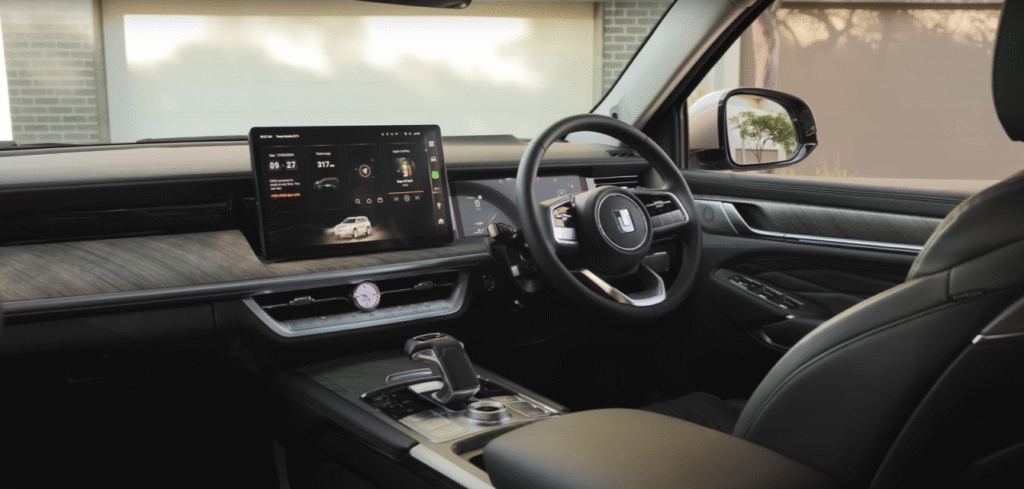
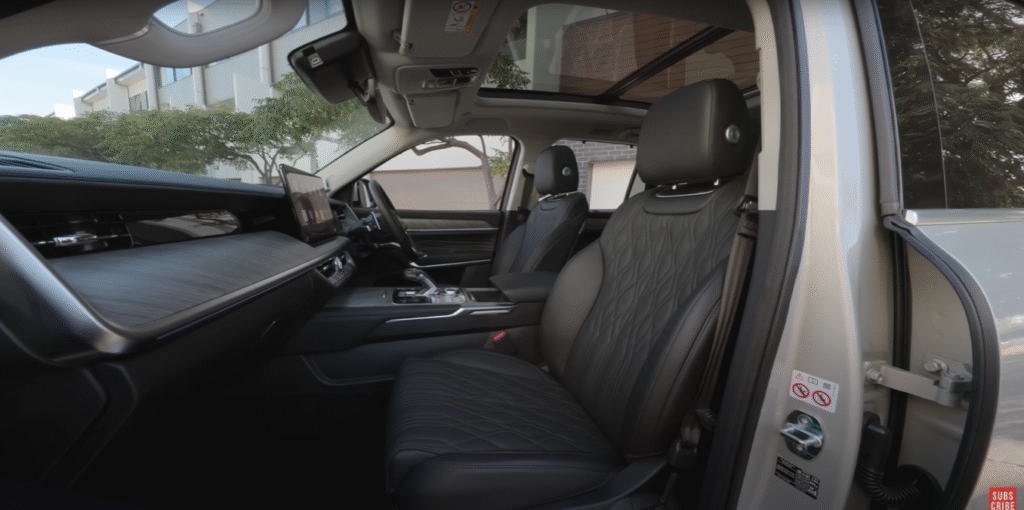
Tech abounds: a 14.6-inch touchscreen with wireless Apple CarPlay/Android Auto, a 9-inch driver’s display, and a 360-degree camera system that shines off-road. Three-zone climate control, Infinity premium audio, and ambient lighting elevate the vibe, but build quality feels solid—soft-touch materials and minimal rattles even after thrashing it on trails. It’s plush enough for long hauls, practical for adventure trips, and surprisingly quiet in EV mode.
Powertrain & Hybrid Technology
Under the hood, the Tank 500 PHEV blends a 2.0L turbocharged 4-cylinder petrol engine (180kW/380Nm) with a 120kW/400Nm electric motor and a hefty 37.1kWh NMC battery, for totals of 300kW and 750Nm. A 9-speed automatic feeds power to all wheels, with seamless EV-petrol transitions.
As a plug-in hybrid, it shines with pure EV mode for up to 120km (NEDC—real-world closer to 80-100km on mixed drives), ideal for silent school runs or emissions-free zones. Off-road, the electric torque provides instant low-end shove for crawling over rocks, while the battery’s IP67 waterproofing and crush-tested durability handle submersion up to 800mm. Charge via 50kW DC (30-80% in 24 minutes) or 6.5kW AC overnight, and you’ve got 950km total range. Efficiency? Claimed 2.1L/100km in hybrid mode—thirsty in petrol-only, but a win for green(ish) explorers.
Off-Road Capabilities
Standard Off-Road Course Impressions
Our first taste was on Lang Lang’s offset moguls and light gravel trails, where the Tank 500 PHEV impressed right out of the gate. In Mud mode, the all-terrain progress control system (with 11 modes including Sport and Snow) hummed along, distributing torque flawlessly via electronic traction aids. Front and rear diff locks engaged smoothly in 4H, powering through ruts without drama. The live rear axle delivered solid articulation, and that instant EV torque made light work of undulations—quieter and more composed than diesel rivals.
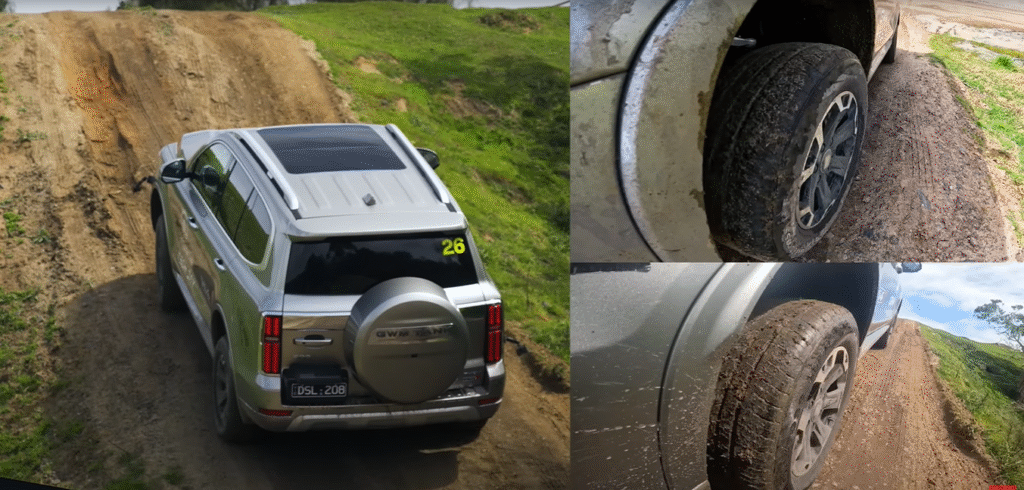

Hill Climb Test
Things got spicy on the steep inclines, where low-range (4L) mode and full diff locks turned the PHEV into a climber. We engaged rear lock first, then front, for maximum grip on loose gravel. The 750Nm surge pulled us up 30°+ gradients effortlessly, with throttle modulation via regen braking preventing wheel spin. Challenges? Minor wheel lift on uneven ledges, but ground clearance held firm at 213mm—no belly scraping. It’s not invincible, but for most Aussie trails, it’s more than capable.
Custom Gnarly Course Test
GWM’s bespoke “gnarly” loop—dips, drops, and whoops—tested articulation and torque vectoring. The Tank devoured it, with the electric motor’s low-speed precision handling dips without hesitation. Uneven surfaces? The suspension soaked up impacts, and tank turn assist (a tight-radius pivot) nailed narrow sections. Critique: Those hypersensitive parking sensors beeped incessantly over rocks, interrupting focus—easily disabled, but a glitchy annoyance mid-crawl.
On-Road Performance & Practical Use
On bitumen, the Tank 500 PHEV is a refined cruiser. Highways feel effortless with 0-100km/h in 6.9 seconds, blending smooth hybrid acceleration and a serene EV hum below 60km/h. City streets? Quiet and efficient, with adaptive cruise and lane-keeping adding ease (though the latter can feel twitchy). The soft suspension prioritizes comfort over sportiness—body roll in corners, but it’s relaxing for 800km hauls.
Practical perks include 3,000kg braked towing for caravans, plus 6kW V2L for powering campsites. Fuel economy hit 3-4L/100km in testing, far better than diesel thirst without the noise.
Key Pros and Cons
Pros:
- Strong off-road capability with diff locks, low-range, and EV torque boost.
- Hybrid powertrain delivers electric-only range and seamless assistance.
- Premium interior loaded with tech and comfort features.
- High 3,000kg towing capacity for trailers and toys.
Cons:
- 213mm ground clearance limits extreme rock-crawling.
- Parking sensors overly sensitive, disrupting off-road flow.
- Highway tires cap serious mud-plugging potential (upgrades needed).
- Five-seat only—no third row for big families.
Verdict – Is the Tank 500 Worth $80k?
The Tank 500 PHEV nails the hybrid off-roader brief: gutsy trails performance meets EV smarts, all for Prado money. It edges the non-plug-in hybrid in power and range but trades seats for battery space—ideal for couples or small families chasing adventure over people-hauling. On-road, it’s a comfy daily; off-road, it conquers 90% of challenges with style.
Worth $80k? Absolutely for hybrid enthusiasts ditching diesel guilt. Potential upgrades like air suspension or AT tires would seal it for purists. Backed by GWM’s 7-year warranty (8 for the battery), it’s a low-risk electrified leap.
Up to 120km (NEDC lab figures), but expect 80-100km in real-world mixed driving—plenty for daily commutes.
The GWM Tank 500 PHEV redefines hybrid off-roading: silent EV sprints to the trailhead, electric torque for technical sections, and hybrid range for endless exploration. It’s not flawless—clearance and sensors need tweaks—but for $80k, it delivers Prado-rivaling capability with future-proof tech. Key takeaway? Hybrids aren’t just for highways anymore; they’re trail-ready disruptors.
What’s your take—diesel diehard or PHEV pioneer? Share your off-road war stories or dream mods in the comments.
Would you buy a GWM Tank 500 PHEV for your adventures? Let us know below and tag a mate who’d love this beast! 🚀



